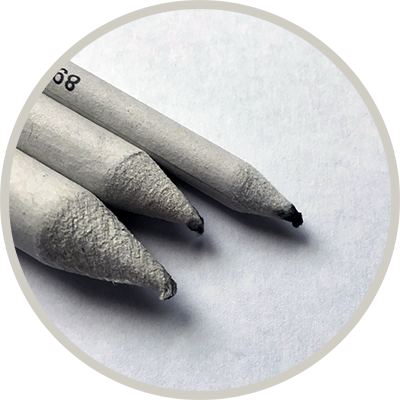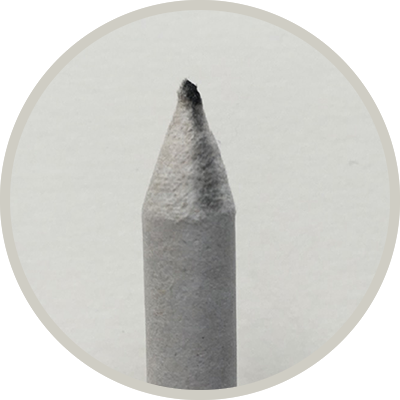
Retractable Eraser

Mono Zero Eraser Tip
Speaking of shading, I expanded my drawing arsenal with two very cool tools. My block eraser is great when it comes to erasing big chunks of work, but not when it comes to small mistakes. I found this retractable mechanical eraser called Tombow Mono Zero Eraser. Instead of lead, it has a 2.3mm round tip eraser. It’s super accurate and easy to use. It’s great for fixing small mistakes and general cleanup.
Stumps and Tortillons
The other tool(s) are a set of stumps and Tortillons. Try to say it in French and it won’t sound like tortious. The Amazon page actually has it misspelled with an extra “i” after the last ‘l’. What are Tortillons?
A tortillon (The French name for /tɔːrˈtiːjɒn/; or blending stump) is a cylindrical drawing tool, tapered at the ends and usually made of rolled paper, used by artists to smudge or blend marks made with charcoal, Conté crayon, pencil or other drawing utensils.
They were mentioned in the early chapters of the book, but I never really thought I need them. Once you start using these stumps, you will never go back to using your fingers to smooth out shadows. It also saves you from having black fingers. You can create some really nice black to white gradients. You can see a before/after example below.


As you use these stumps more and more, the tips pick-up the colour that they’re been applied to. I imagine when drawing/painting in colour, one would need a stump for every primary colour. That’s something that I will experiment with once I get some good quality colour pencils.
You can see some of the stumps that I’ve been using in my drawings. The tips get darker and darker overtime and you don’t need as much lead on paper to create a bigger fallout/spread. I’ll make a video of how I use a stumper in a later posting.










 From creating WordPress themes to server architecture; I bring over 20 years of experience in Web/application development to my clients. Like the Web, my skill-set is constantly changing to adapt to new technologies and methodologies in delivering results. I'm a firm believer in using well-established standards to ensure longevity and flexibility for all my projects.
From creating WordPress themes to server architecture; I bring over 20 years of experience in Web/application development to my clients. Like the Web, my skill-set is constantly changing to adapt to new technologies and methodologies in delivering results. I'm a firm believer in using well-established standards to ensure longevity and flexibility for all my projects. 
